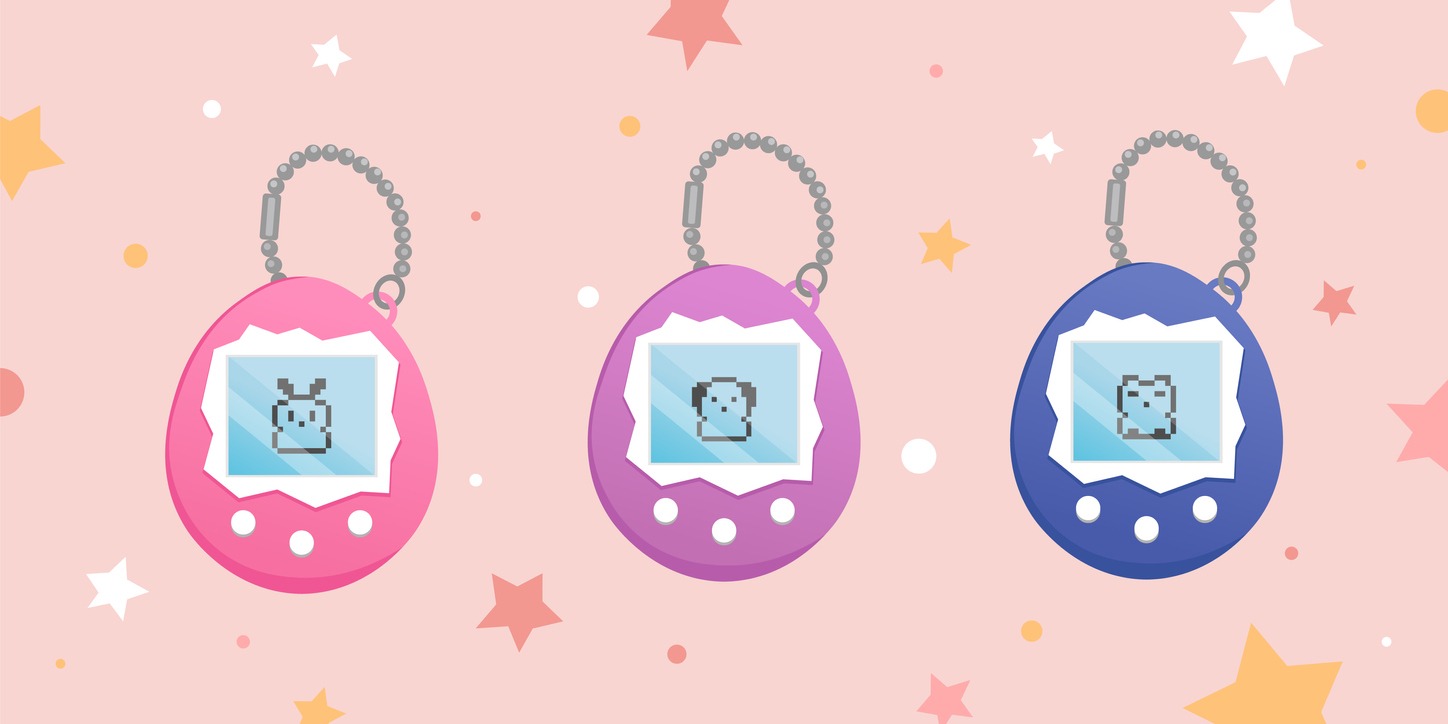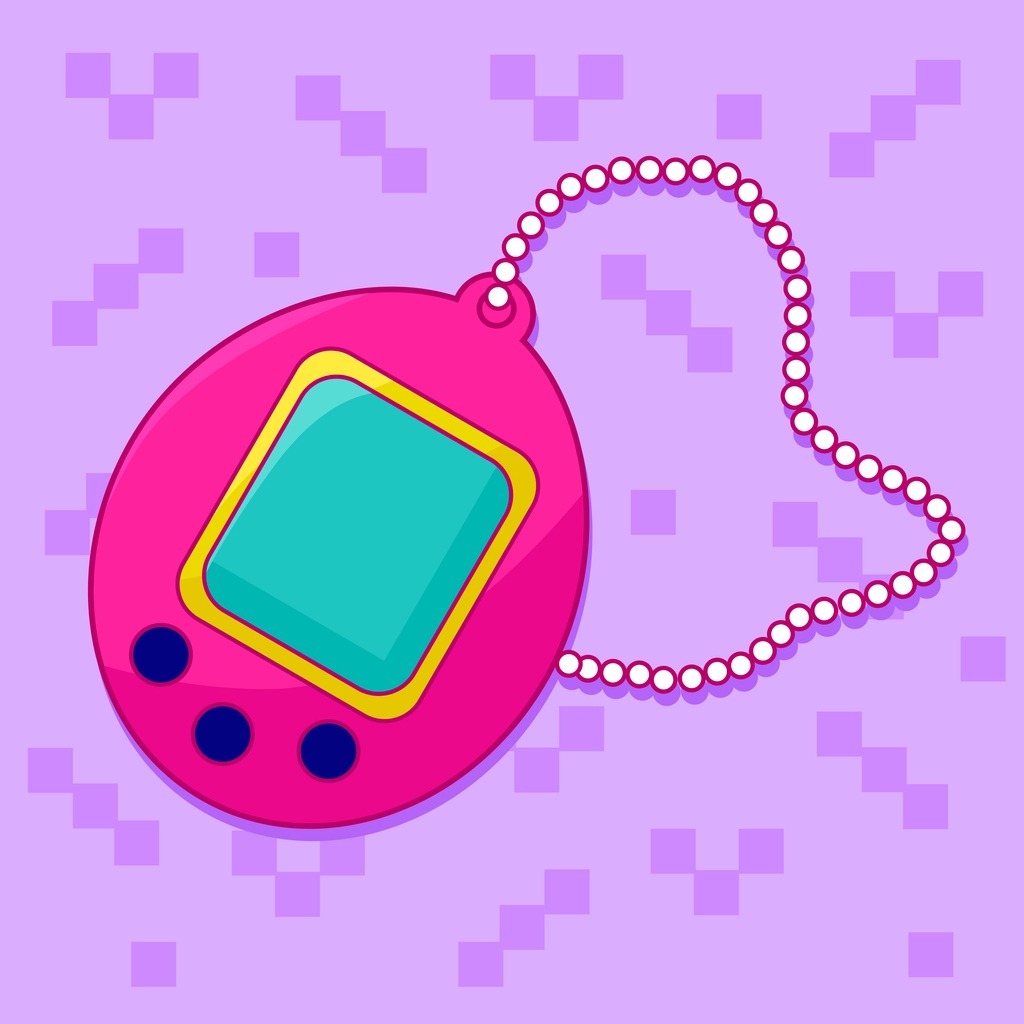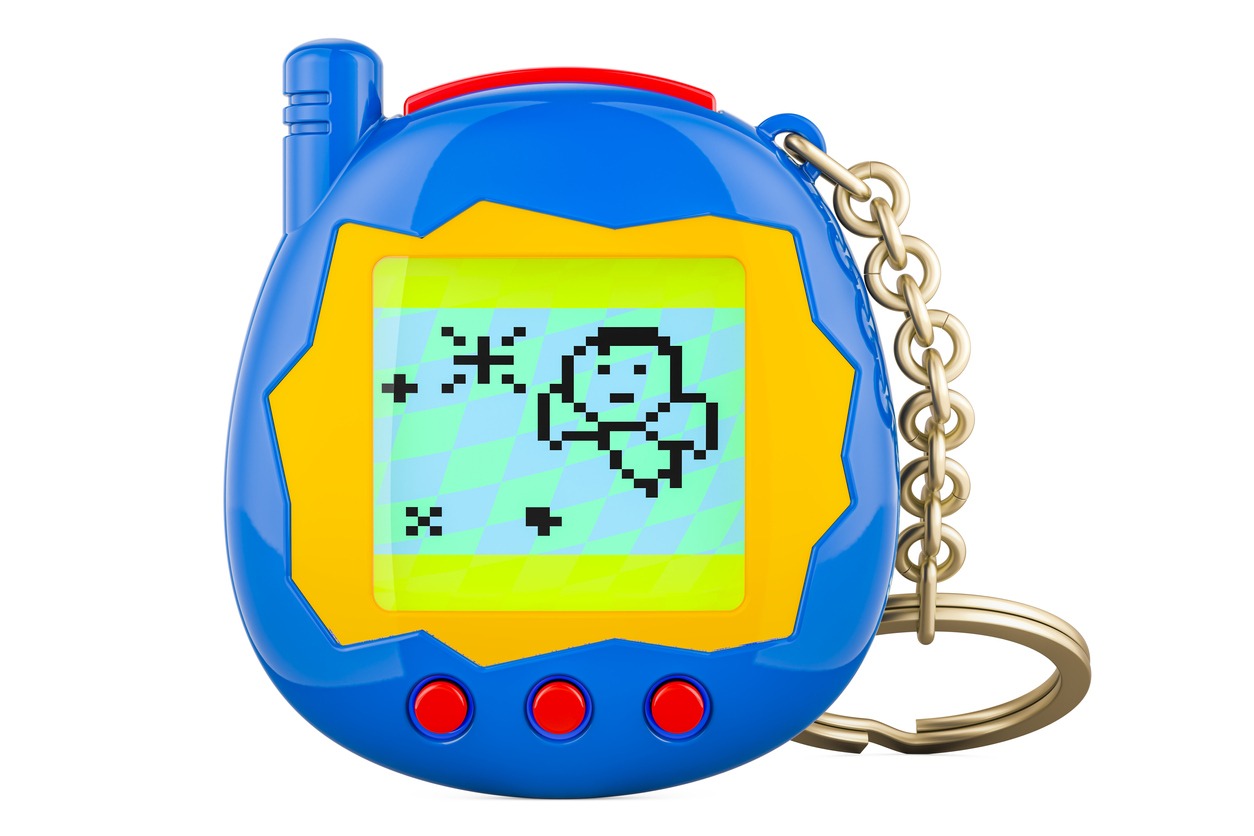There have been many toys in the 1990s that became popular because of how unique they are. One of these toys is the Tamagotchi, an electronic device that allows users to take care of a digital pet. What’s interesting about the Tamagotchi toy is that it became popular even in the 2000s and early 2010s, and its popularity can be attributed to just how fun it is to play. To know more about this toy, here are the nostalgic origins of Tamagotchi.
The Concept Behind Tamagotchi
The idea behind the gameplay mechanics of Tamagotchi was conceived by Akihiro Yokoi, a Japanese toy designer and then-president of a toy company called Wiz Co., Ltd., who came up with the idea after watching a TV ad in the 1990s where a boy wasn’t allowed to bring his pet turtle for his family’s vacation. [1]
As an avid lover of pets, Yokoi resonated with the boy’s sadness over his pet. So, Yokoi thought about a kind of pet that kids and adults can bring anywhere, and the best pet for this is a digital one, as it can fit inside a small device and won’t cause problems for other people during the trip.
The name of the toy, “Tamagotchi,” is portmanteau or a combination of the words “tamago (egg)” and “uotchi (watch).” Yokoi originally wanted the toy to be a watch, but the final design came out to be an egg-shaped pendant that can be chained to a pocket or a backpack.
The Success of Tamagotchi
Yokoi then presented his idea to Aki Maita, a fellow toy executive who worked at Bandai, a toy manufacturer that was founded in 1950 in Tokyo, Japan. Maita was impressed with the idea, so she agreed to greenlight the toy and sell it primarily in Japan and the United States.
Although Bandai was one of Japan’s leading toy companies, they were struggling to gain success in the United States and other countries in terms of sales in the 1980s. However, by the 1990s, Bandai was able to get better sales figures in the United States, thanks to the toys they produced for the TV show called “Mighty Morphin Power Rangers.” The company would become even more successful when it released Tamagotchi in Japan, the United States, and other neighboring countries.
At first, many of the executives at Bandai weren’t keen on the idea of producing a digital pet toy, as they didn’t find anything fun about taking care of a digital pet when Maita presented the toy during a meeting.
Even after the toy was approved for production, Maita was having difficulty marketing Tamagotchi to toy stores, as these stores didn’t believe that the toy would sell well. But, in the focus groups that they created, Bandai found out that teen girls love the toy, so they marketed Tamagotchi towards them at the beginning.
Their marketing strategy was very effective, as many teen girls bought Tamagotchi when it was released in 1996, and Bandai was able to sell five million units of the toy in Japan within six months. Soon, even teen boys began hopping on the bandwagon by buying their own Tamagotchi toys.
The release of Tamagotchi in the United States in 1997 was also successful, as a department store called F.A.O Schwartz was able to sell 3,000 units on the first day of release in San Francisco, while their New York flagship store sold 10,000 units. [2] By September of 1997, Bandai sold more than 70 million units worldwide.
How Tamagotchi is Played
One of the reasons why Tamagotchi became successful in the United States is its unique gameplay, as there were no other electronic toys back then that allowed children to take care of digital pets. In order to properly take care of a digital pet in a Tamagotchi toy, the users would have to feed, clean up, and sometimes even discipline the digital pet whenever it becomes unruly.
After activating the Tamagotchi toy for the first time, the user will be greeted with a digital egg on the toy’s screen. The digital egg would wiggle numerous times until it hatches into a small pet. The small pet can then grow into different shapes or sizes depending on how well it is taken care of. To know if the user is taking care of a digital pet properly, the Tamagotchi toy provides a “Happy” meter that fills up whenever the user feeds the pet with the food it likes or plays mini-games with the pet.
Besides the “Happy” meter, the Tamagotchi toy can also show a “Discipline” meter that is filled whenever you scold your pet for not answering your calls for attention or for refusing to play or eat. Sometimes, the digital pet can leave droppings after eating a meal, and it is important for the user to regularly clean the droppings to prevent the digital pet from getting sick. However, the digital pet can be potty trained so that it won’t leave droppings on the ground. Through training, the users can max out the “Training” meter, which can then help the pet evolve into a bigger version of itself.
If the area of the digital pet remains uncleaned or if the pet is not properly fed, it can get sick. If the pet is sick, it will not play with the user or eat a meal. Unfortunately, a pet can die if its illness isn’t treated. In order to treat an illness, the user would have to press the “Medicine” button frequently for several days.
Even though kids are taking care of a digital pet in Tamagotchi, the toy will make them feel like they are feeding, cleaning, and playing with a real pet because of how it needs to be disciplined, how it can get sick, and how it can die. Through learning how to better care for pets, kids will be rewarded with beautiful versions of the digital pets in Tamagotchi, as the special versions of specific creatures in the toy can only be unlocked by being attentive and caring for the pets.
Today, the original Tamagotchi toy is available in various colors and designs. Here are some of the best ones that you can check out online:
- Tamagotchi Original – Mametchi Comic Book
- Tamagotchi Original – Mermaid
- Tamagotchi Original – Dreamy
- Tamagotchi Original – Flower Gingham
- Tamagotchi Original – Sky
- Tamagotchi Original – Striped Tiger
- Tamagotchi Original – Sunset
Conclusion
Although Tamagotchi isn’t as popular today compared to its peak in the 1990s, there are still plenty of kids who find enjoyment in playing with Tamagotchi, and there are also adults who are big collectors of Tamagotchi-related products and merchandise. If you haven’t tried playing with a Tamagotchi yet, you can buy one so that you can see for yourself how appealing it is for children, especially those who love pets.
References
[1] Santabarbara, S. (2023, September 25). The History of Tamagotchi. Retro Dodo. Retrieved November 21, 2023, from https://retrododo.com/history-of-tamagotchi/
[2] Delgado, M. (2021, December 22). Keeping Tamagotchi Alive. Smithsonian Magazine. Retrieved November 21, 2023, from https://www.smithsonianmag.com/innovation/keeping-tamagotchi-alive-180979264/




